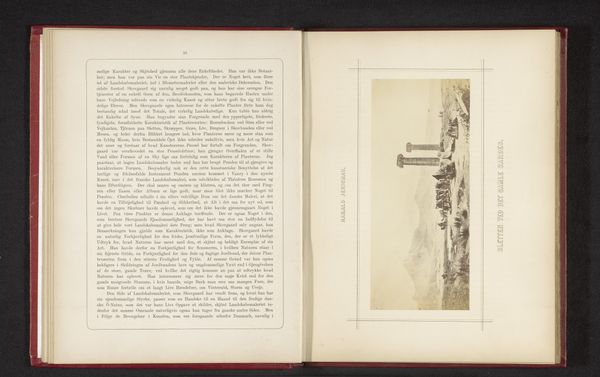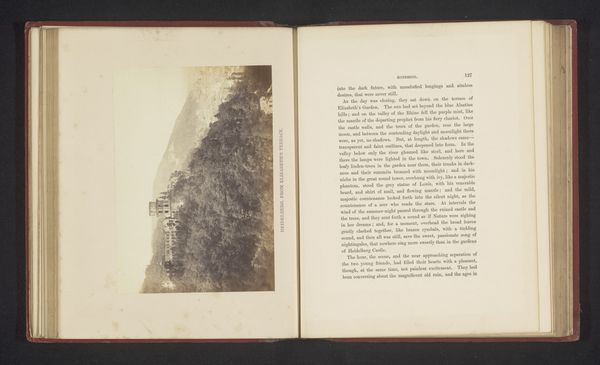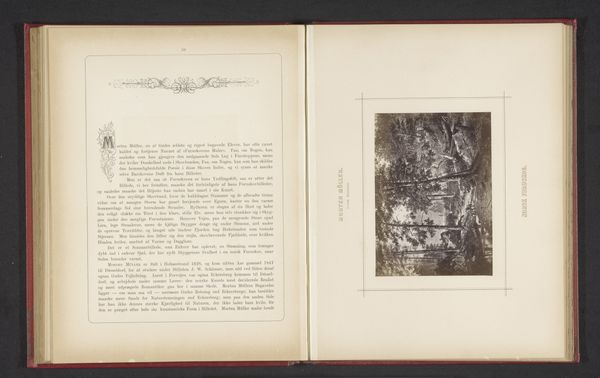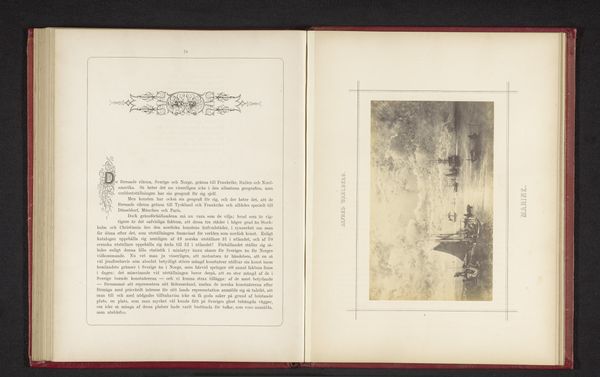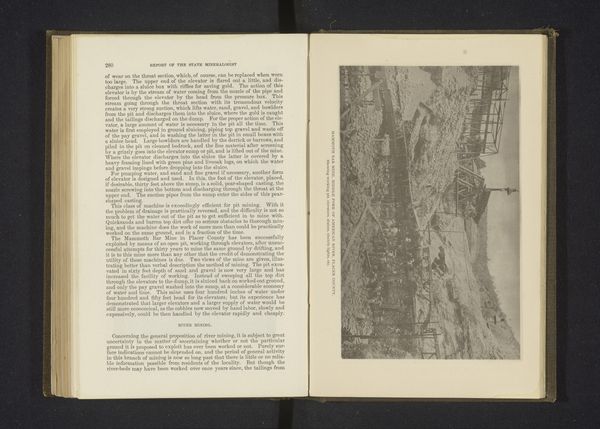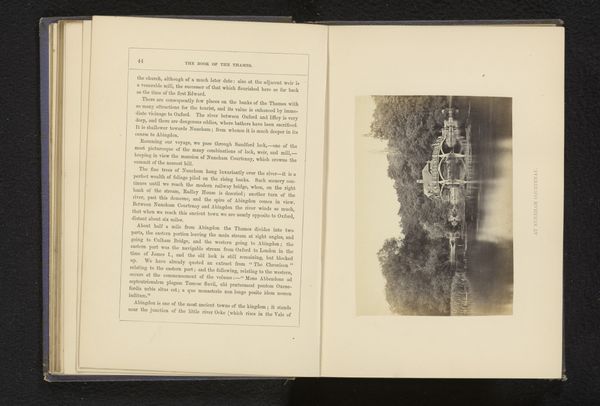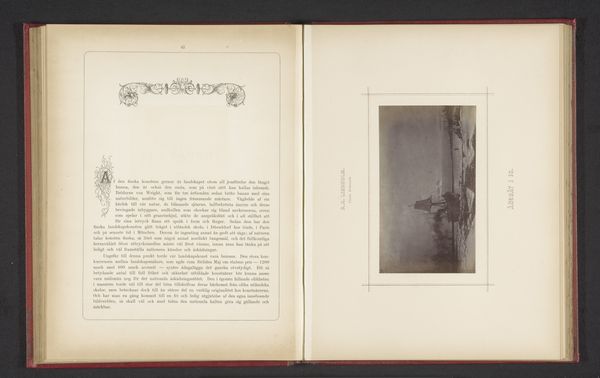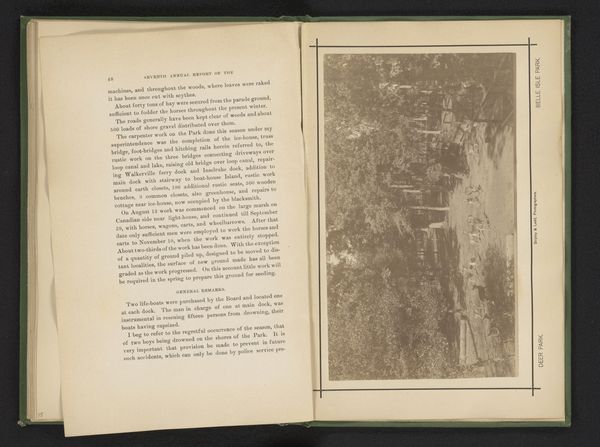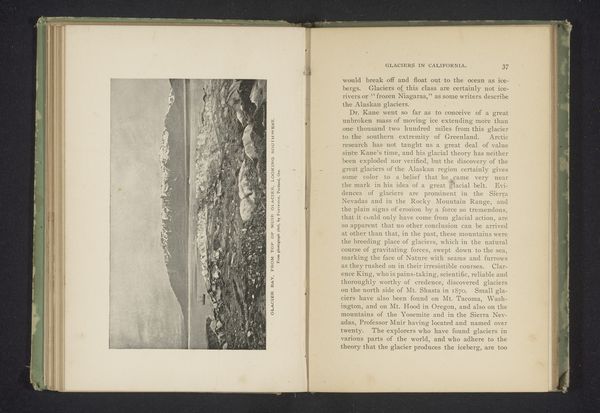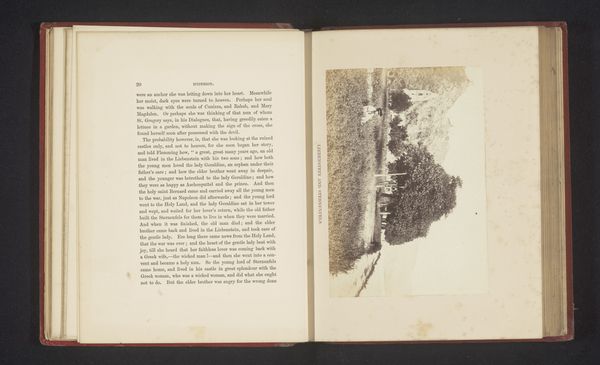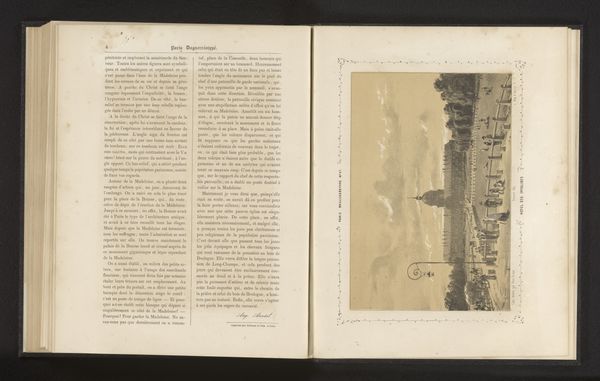
Fotoreproductie van een schilderij van een groep mensen op een boot met vee door Anders Monsen Askevold before 1879
0:00
0:00
print, etching
# print
#
etching
#
landscape
Dimensions: height 95 mm, width 200 mm
Copyright: Rijks Museum: Open Domain
Editor: Here we have a print, an etching to be exact, of a painting by Anders Monsen Askevold, likely created before 1879. It depicts a group of people and animals crowded onto a boat. It feels almost chaotic, with so much happening in a small space. As you look at the lines and forms in the composition, how do you see its structure? Curator: Indeed. From a formalist perspective, the artist uses diagonal lines to create a sense of movement and instability, almost as if the boat is tilted towards us, pulling us in. Note also how the value contrast works – the darker etched lines pull our eyes across and around the scene. What do you observe? Editor: Now that you mention the diagonals and tonal contrasts, I also observe that the way the artist has placed a mass of dark shapes— figures and cattle — at the center acts as a focal point. Could you elaborate on this further, thinking of semiotics perhaps? Curator: Certainly. That concentration of the etching might be read as a signifier, communicating tension within the artwork. It embodies an opposition to pictorial depth which is mostly devoid of visual information. One can imagine that this very tension might signify the social stratification, with working classes squeezed into cramped vessels, for instance. This dynamic between compression and openness is key to how we, as viewers, interpret Askevold's work. What, if anything, about the use of negative space draws your eye? Editor: Interesting – that hadn’t struck me. I’m more accustomed to analyzing colour, but seeing how you analyze lines and values in an image gives me a different perspective on the structural elements and how they communicate underlying tension. Curator: Precisely. By understanding the visual components, we understand, ultimately, the artist's message about pressure. Editor: Right, this deeper formal understanding really shapes how one approaches decoding artworks beyond merely their historical narrative.
Comments
No comments
Be the first to comment and join the conversation on the ultimate creative platform.
